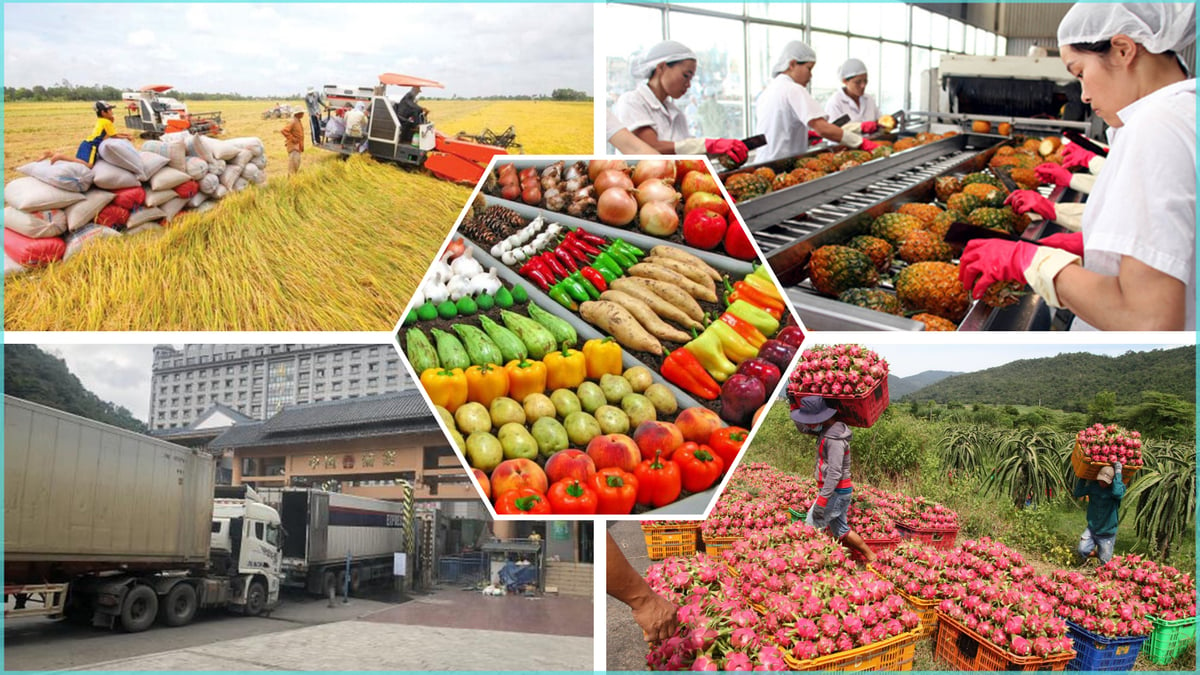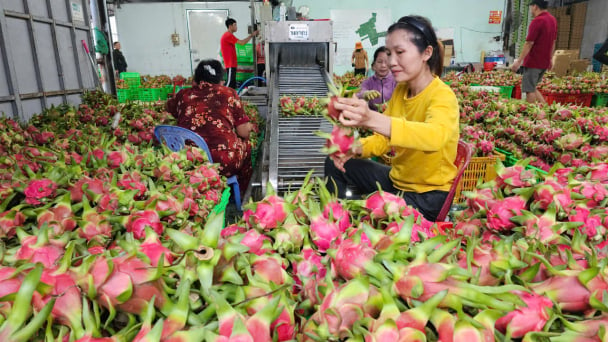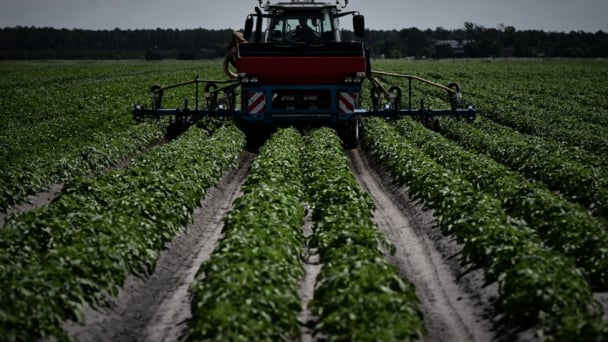June 17, 2025 | 16:43 GMT +7
June 17, 2025 | 16:43 GMT +7
Hotline: 0913.378.918
June 17, 2025 | 16:43 GMT +7
Hotline: 0913.378.918

Agricultural exports in the past 11 months have reached US$ 49.04 billion (up nearly 12% over the same period in 2021).
According to the Ministry of Agriculture and Rural Development, after 11 months, the total import-export turnover of agricultural, forestry and fishery products is about US$ 90.26 billion, up 9.5% over the same period last year. In which, agricultural exports reached about US$ 49.04 billion, up 11.8%; import (import) was about US$ 41.22 billion, up 6.9%; trade surplus of US$ 7.82 billion, up 47.8%.
Thus, the value of agricultural exports in the first 11 months of 2022 has surpassed the record figure of 2021 of US$ 48.6 billion
In November alone, the export turnover of agriculture, forestry, and fishery was estimated at over US$ 4.27 billion, down 4.8% compared to November 2021 and down 0.2% to October 2022. Among them, the main group of agricultural products is US$ 2.13 billion, up 10.3% compared to November 2021; main forest products nearly US$ 1.2 billion, down 15.2%; seafood US$ 750 million, down 17.5% and livestock US$ 31.7 million, down 13.5% …
In the first 11 months of 2022, the leading group of agricultural products exported over US$ 20.73 billion, up 6.6%; main forest products about US$ 15.59 billion, up 8.2%; seafood reached US$ 10.14 billion, up 27%; livestock production $ 361.4 million, down 8.4%; production input is over US$ 2.2 billion, up 38.1%.
Up to now, the agricultural sector has 8 products/product groups with an export value of over US$ 2 billion, including coffee, rubber, rice, vegetables, cashews, shrimp, pangasius, and wood products.
Many items achieved higher export value than in the same period last year, such as coffee over US$ 3.5 billion (up 31.5%); rubber, over US$ 2.9 billion (up 3%); rice over US$ 3.2 billion (up 6.9%); pepper US$ 895 million (up 3.2%); cassava and cassava products over US$ 1.2 billion (up 16.4%), pangasius US$ 2.2 billion (up nearly 62%), shrimp US$ 4.1 billion (up 14.6%), timber and other products wood products US$ 14.6 billion (up 9%)...
Regarding export markets, Asian markets account for 44.7% of the market share, the Americas 27.4%, Europe 11.3%, Oceania 1.7% and Africa 1.7%.
The United States remains the largest export market, reaching US$ 12.3 billion, accounting for 25% of the market share. China ranked second with about US$ 9.3 billion, accounting for 18.9% market share; The third is Japan, with a value of US$ 3.9 billion, accounting for 7.9%...
According to the Ministry of Agriculture and Rural Development, China has not entirely abandoned the "Zero COVID" policy. China's renminbi and Thailand's baht depreciated more than VND and USD, so China tends to import and export more Thai products.
Recently, fresh pomelo (citrus maxima) became the 7th fruit of our country allowed to be imported into the US market after mango, longan, litchi, dragon fruit, rambutan, and breast milk... The result of the long-term negotiation efforts of the specialized agencies between the two sides and the constant companionship of the Vietnamese pomelo producers and exporters community.
The Ministry of Agriculture and Rural Development said that the ministry continued to direct the implementation of the Protocol on durian export and temporary requirements for passion fruit to China; import requirements for pomelos exported to the United States for relevant organizations and individuals in the locality.
In particular, the Ministry soon negotiated technical contents to sign the Protocol on phytosanitary requirements for dragon fruit, longan, litchi, rambutan, and mango exported to China; and coordinated weekly online inspections with the General Administration of Customs of China for bananas and durians. Also, negotiate to remove technical and trade barriers and open official export markets to other large and potential markets such as Japan, Korea, Myanmar, Australia, and New Zealand.
Specialized units work with Japanese plant quarantine inspectors to inspect Vietnamese dragon fruit, mango and longan processing facilities to boost the export of these products.
Towards the goal of total export turnover of agricultural, forestry and fishery products reaching US$ 50 billion this year, the Ministry of Agriculture and Rural Development will continue to accelerate the restructuring of the industry and improve productivity, quality, efficiency of production, business, and direction and orient localities, especially critical areas of rice production, animal husbandry and aquaculture, to have production plans suitable to the market's demand.
In addition to promoting international trade and opening markets, in the domestic market, focus on developing diversified channels of food and food consumption, ensuring supply and stabilizing food and pork prices to help keep the consumer price index (CPI) within the allowable range, especially during the 2023 Lunar New Year.
Translated by Ha Phuc
![Turning wind and rain into action: [6] ‘Four on-the-spot’ disaster management software](https://t.ex-cdn.com/nongnghiepmoitruong.vn/608w/files/news/2025/06/14/z6705183772518_8e6a71d5e2d464e10197411eb1d14b51-nongnghiep-192556.jpg)
(VAN) By simply activating the scenario on the disaster management software, the relevant authorities immediately know how many households need to be evacuated, where to evacuate them to, and by what means of transportation…

(VAN) According to the Binh Thuan Department of Industry and Trade, in the first five months of 2025, Binh Thuan's dragon fruit export turnover increased by 20.65% compared to the same period last year.

(VAN) EU countries on Thursday gave final approval to new tariffs on fertilizer imports from Russia, a move aimed at cutting off revenue that could support Moscow’s war in Ukraine, despite concerns from European farmers.

(VAN) The working delegation from the Ministry of Agriculture and Environment conducted an important trip to the Netherlands to strengthen strategic partnerships and sustainable development in the agricultural sector.

(VAN) The letter ‘A Plea from the Ocean’ not only evokes emotion but also awakens the human conscience to the responsibility of protecting life on Earth.

(VAN) The Department of Agriculture in South Africa has announced the country’s first mass vaccination of poultry to prevent local birds from contracting avian influenza.

(VAN) Establishment of the Mekong Delta Regional Agricultural Linkage Center, aiming for a closed value chain, deep processing, trading platforms, and international market connectivity.